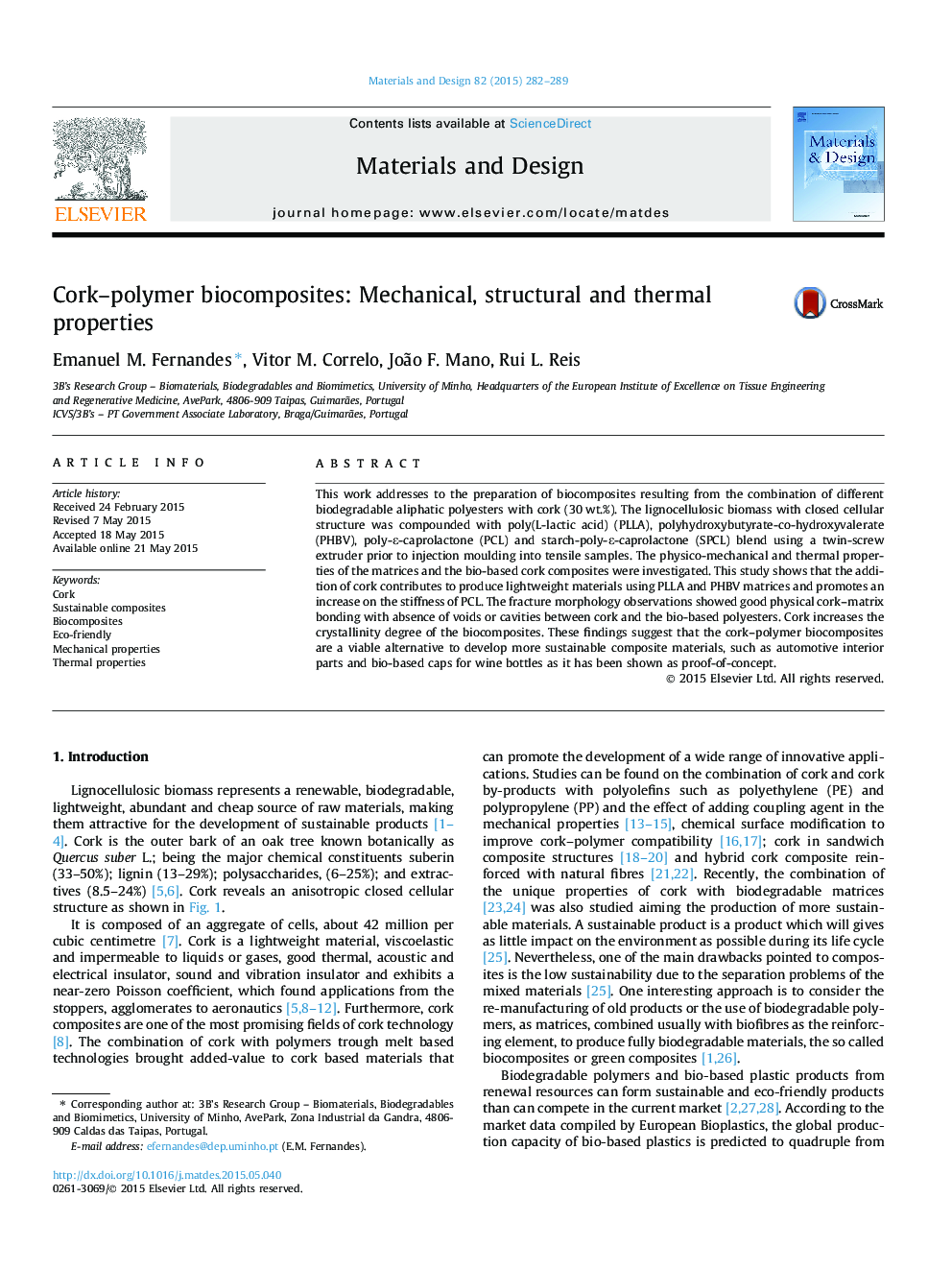| کد مقاله | کد نشریه | سال انتشار | مقاله انگلیسی | نسخه تمام متن |
|---|---|---|---|---|
| 828395 | 1470300 | 2015 | 8 صفحه PDF | دانلود رایگان |
• Cork composites with different bio-based polyester stiffness were manufactured.
• Cork biomass contributes to produce lightweight and sustainable biocomposites.
• The fracture morphology shows good physical adhesion between cork–matrix system.
• Cork increases the crystallinity degree of the biodegradable aliphatic polyesters.
This work addresses to the preparation of biocomposites resulting from the combination of different biodegradable aliphatic polyesters with cork (30 wt.%). The lignocellulosic biomass with closed cellular structure was compounded with poly(L-lactic acid) (PLLA), polyhydroxybutyrate-co-hydroxyvalerate (PHBV), poly-ε-caprolactone (PCL) and starch-poly-ε-caprolactone (SPCL) blend using a twin-screw extruder prior to injection moulding into tensile samples. The physico-mechanical and thermal properties of the matrices and the bio-based cork composites were investigated. This study shows that the addition of cork contributes to produce lightweight materials using PLLA and PHBV matrices and promotes an increase on the stiffness of PCL. The fracture morphology observations showed good physical cork–matrix bonding with absence of voids or cavities between cork and the bio-based polyesters. Cork increases the crystallinity degree of the biocomposites. These findings suggest that the cork–polymer biocomposites are a viable alternative to develop more sustainable composite materials, such as automotive interior parts and bio-based caps for wine bottles as it has been shown as proof-of-concept.
Figure optionsDownload as PowerPoint slide
Journal: Materials & Design - Volume 82, 5 October 2015, Pages 282–289
